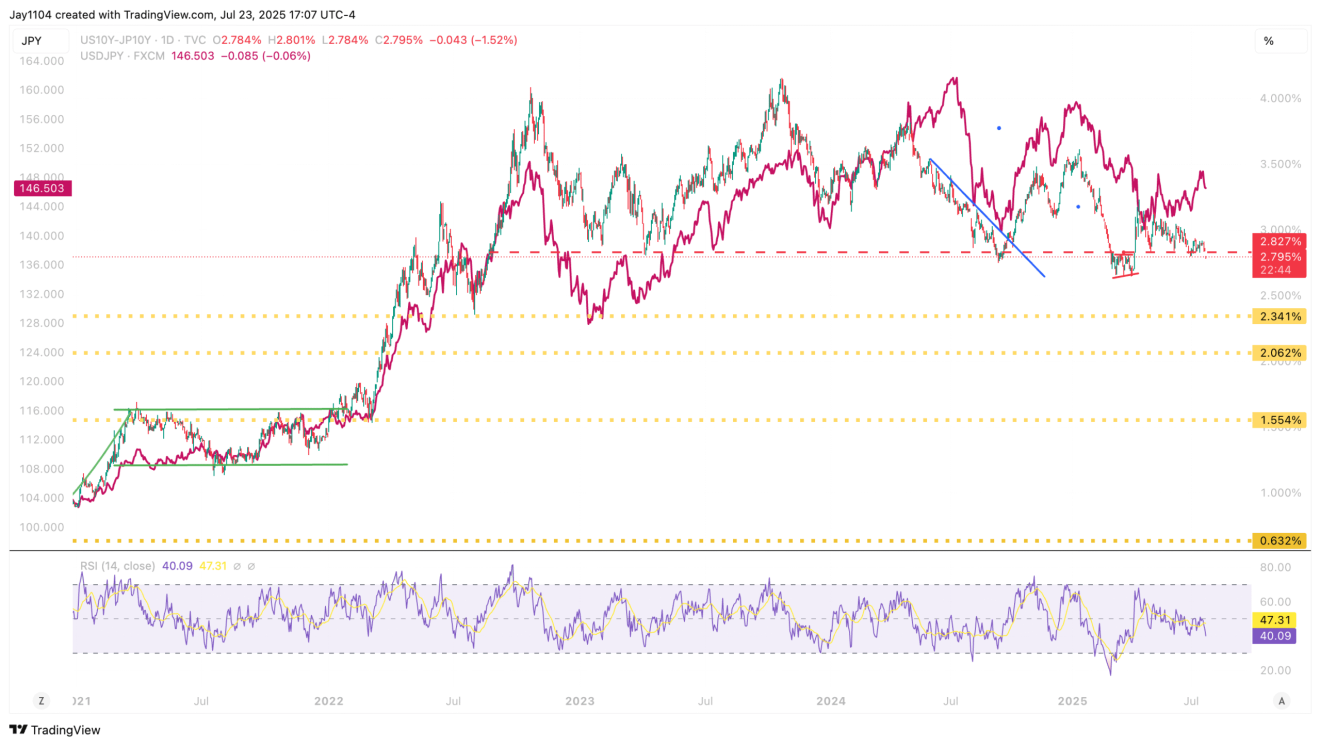Street Calls of the Week
The S&P 500 moved higher again yesterday and remains in an unusually peculiar position. The 10-day realized volatility increased to 5.4% after briefly dipping to 4.5% around midday, while the 1-month implied correlation index dropped below 11. Historically, when realized volatility and correlation have reached levels this low, it’s typically been near market tops—at least dating back to 2023.
Again, I have been saying for a few weeks that around the time of the earnings, these patterns shift, and we start to see volatility and correlations rise. Perhaps this year will be different, but in recent years, it has been the case.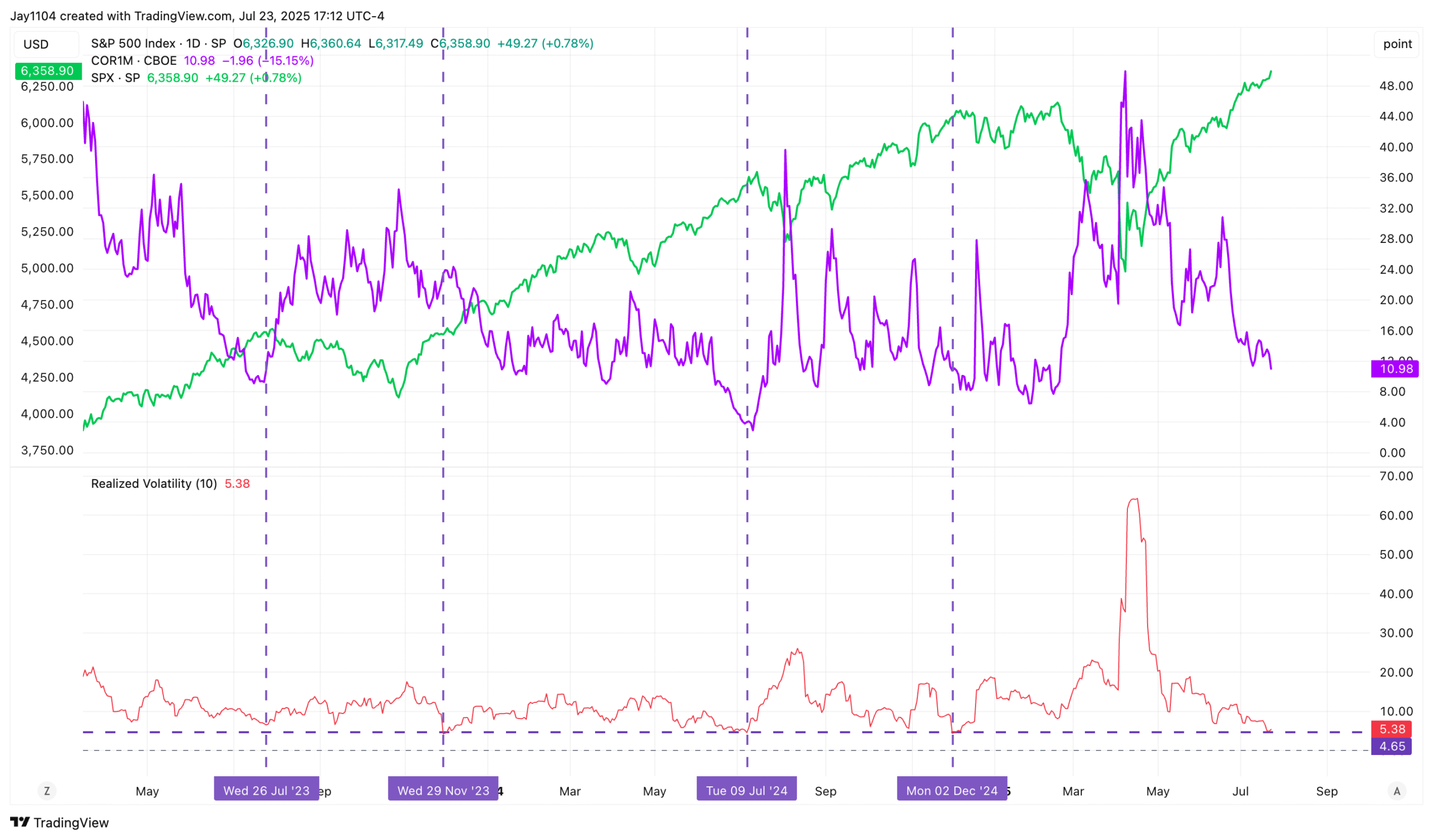
The SKEW index also climbed to about 160 yesterday, which is becoming notably elevated.
Apologies for continuing to harp on the same stock market theme for nearly all of July, but I genuinely believe this has been the primary driver behind market dynamics since mid-June.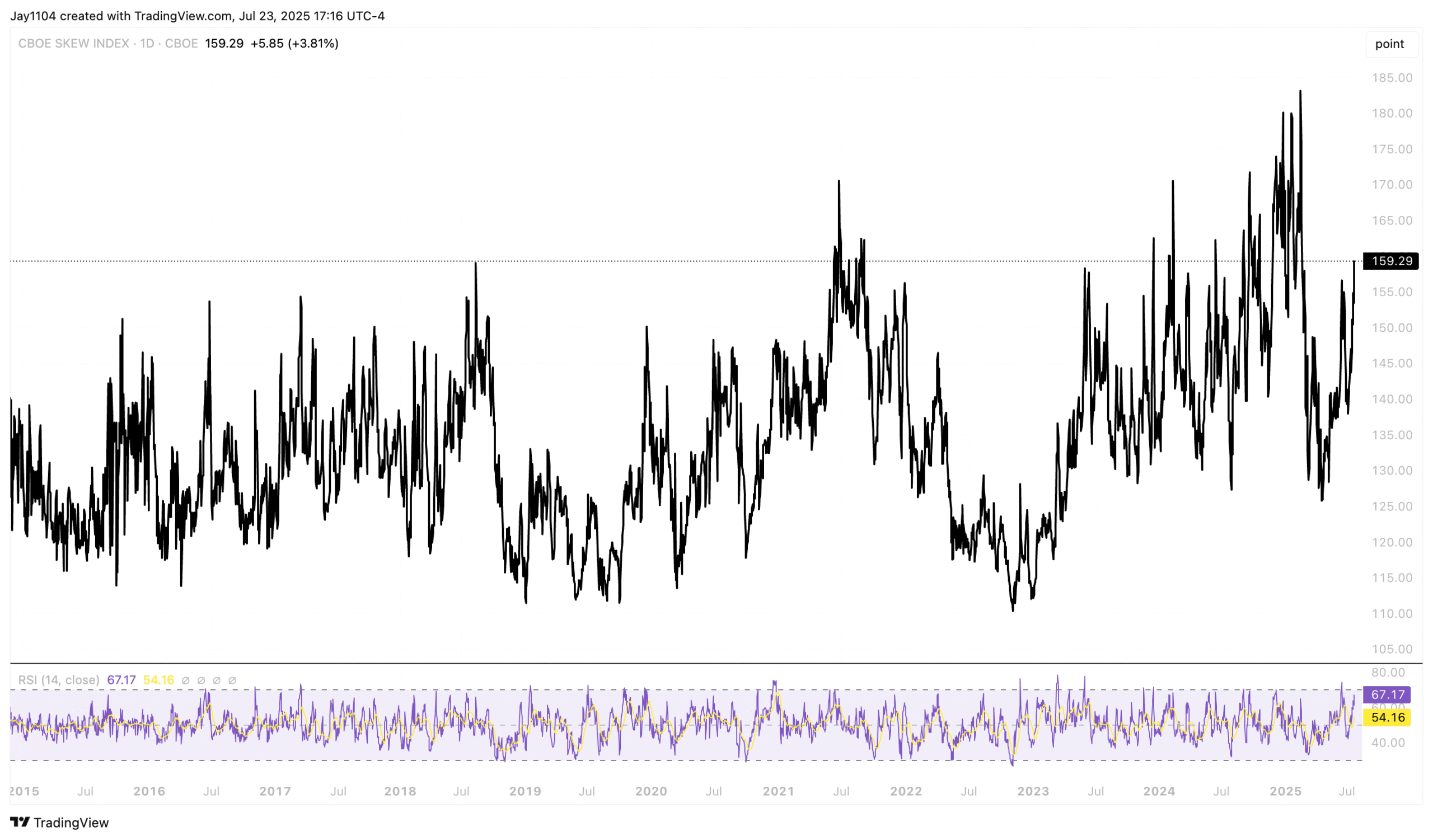
In the meantime, the Treasury General Account is likely to have bottomed and should begin moving higher from here. There’s considerable attention surrounding this, especially regarding the impact on overall market liquidity once the process commences. Unlike in 2023, the reverse repo facility won’t play a significant role this time, meaning reserves held at the Fed will probably decline. We’ll know whether—and when—this happens by monitoring SOFR.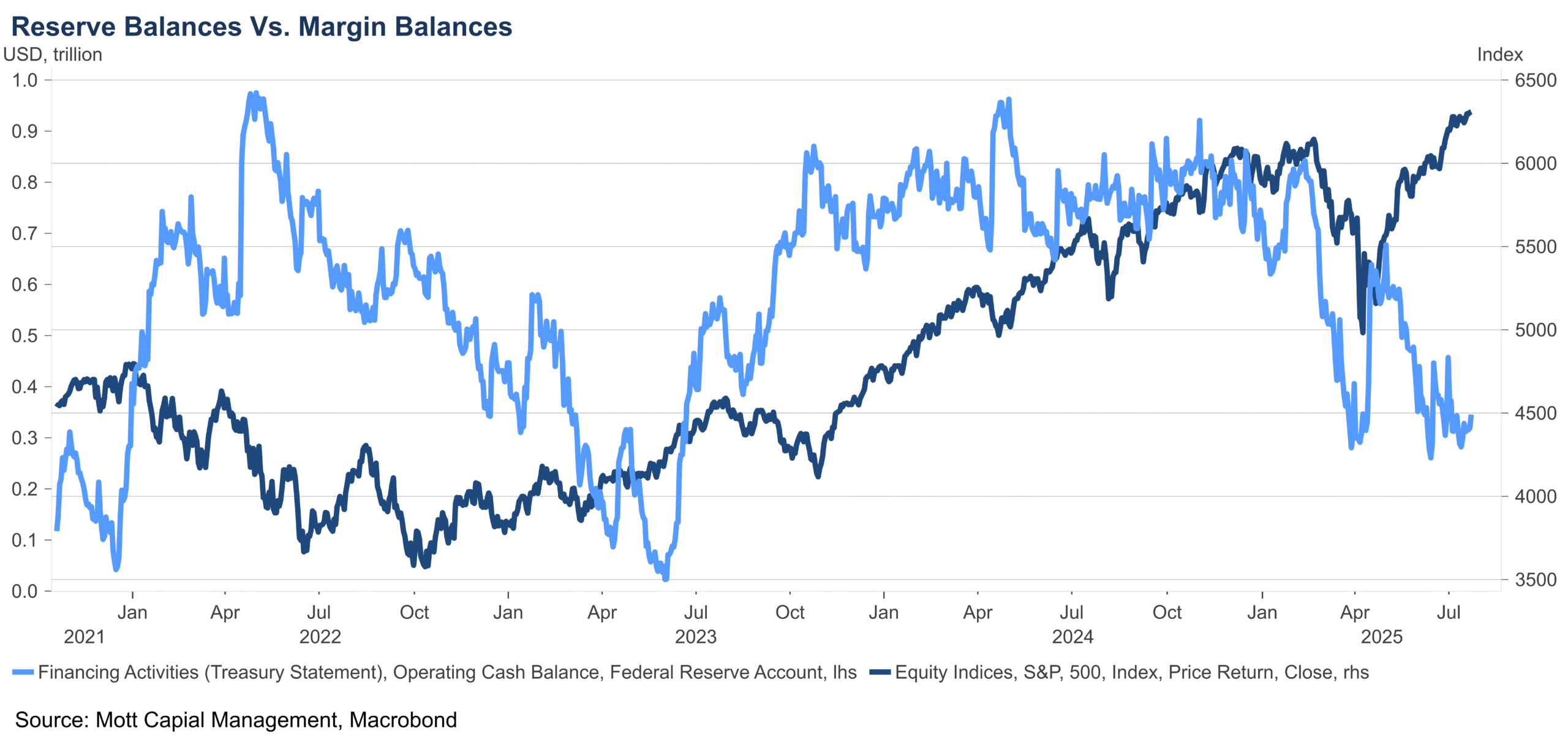
Japanese Bond Yields Rise to a Critical Level
A trade deal announced with Japan generated mixed reactions. Coupled with a disappointing election result over the weekend, this caused a significant rise in Japanese bond yields. We’ve previously highlighted the risks associated with rising rates in Japan, and overnight, the 10-year JGB reached a critical level.
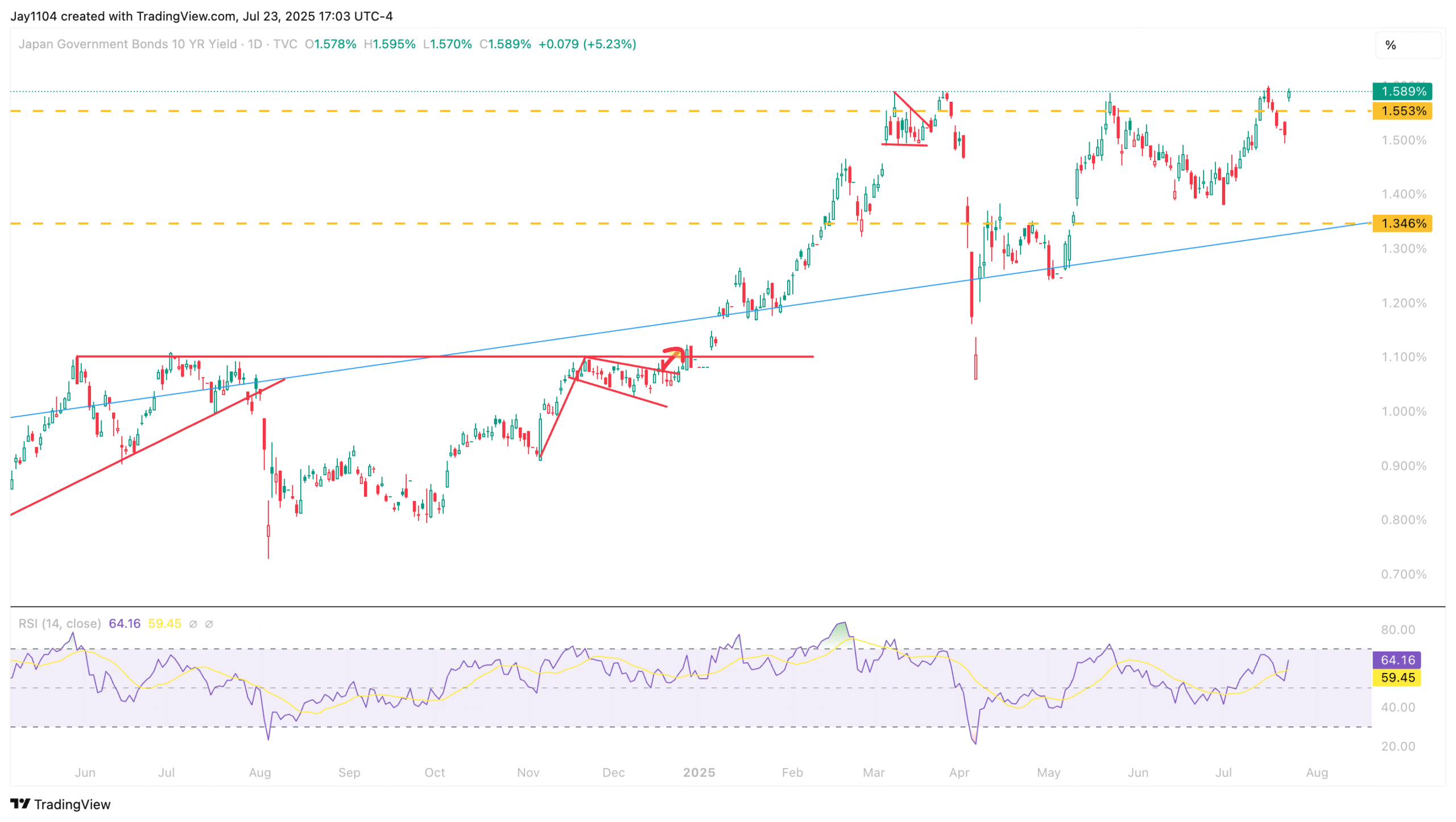
This 1.59% level for Japan’s 10-year yield is crucial, as a breakout from here could send rates sharply higher. The weekly chart suggests a potential move back toward 1.9%, a level not seen since June 2008.
This would significantly increase the odds of the spread between the 10-year Treasury and JGB narrowing below 2.8%, potentially declining toward or even into the 2.5% region. If the spread tightens to that extent, it’s doubtful USD/JPY can maintain the 140 level.
